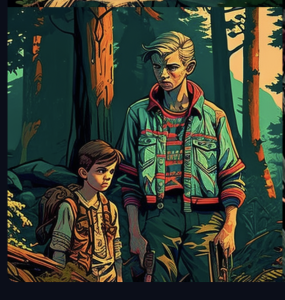My most favorite narrative game would be Majora’s Mask, this entry in the Legend of Zelda series is the most off-mold of the titles. Link has arrived in the land of Termina and it is going to be destroyed in 3 in game days, which to the player takes 54 minutes. Obviously you cannot save the world in under an hour so you are given the power to reset time, and with it the entirety of the world. Your money, your arrows, your actions, your progress, is all reset except for a few key items, but most importantly your knowledge is NOT reset. After a number of time loops you start to learn the inhabitants’ routines, schedules, hopes and dreams, and that is the most important aspect of the game to me. The game isn’t really about saving the world and being the hero, it’s about getting to know the people and learn that everyone has problems and everyone reacts to the end of the world differently. Every time you reset the loop everyone will forget you, even the dungeons will reset, so you need to figure out what you need to do to gain the power to save these people. However, not everyone CAN be saved. There are multiple people you interact with who are going to die or have already died. This game is considered to be the most adult Zelda game there has been, there are multiple instances of characters with depression, kidnappings, alien abduction, and abandonment. The aspect of the time-loop introduces something no other game I’ve played does, a sense of futility. Everyone you help, or hurt, will forget you. I would argue that the strategic gameplay drives the narrative in this case, you have to prioritize what you will do, where you will go, who you will help, each loop to create progress in the game. Each major location in the game is dealing with some sort of tragedy in their own way, in the jungle monkeys have kidnapped a princess, the rock-people are waiting for their elder to save them (who you have found frozen solid) from an eternal winter, the fish-people have had their young stolen, and the canyon area is experiencing the dead rising. The most important though is the hub town, here everyone is dealing with the impending apocalypse in their own way, denial, anger, bargaining, depression, and on the last day acceptance. The game is really about how people deal with grief, and how everyone experiences it differently. This game may be my favorite game of all time.




























